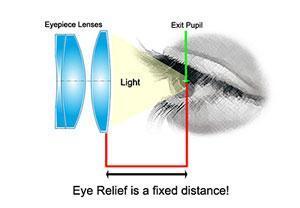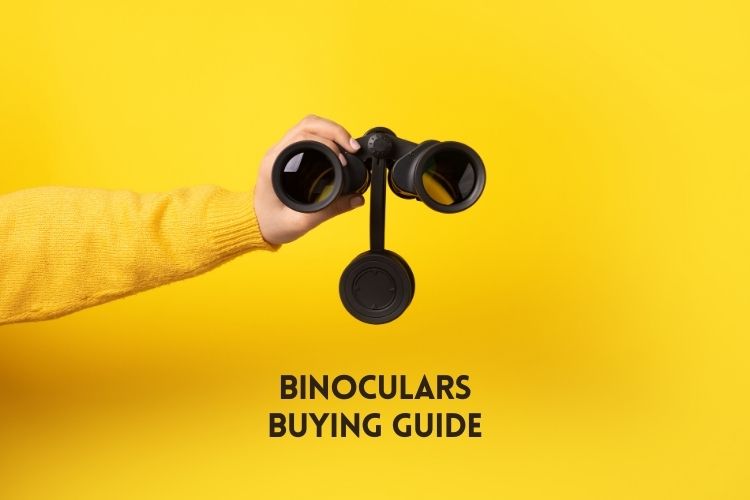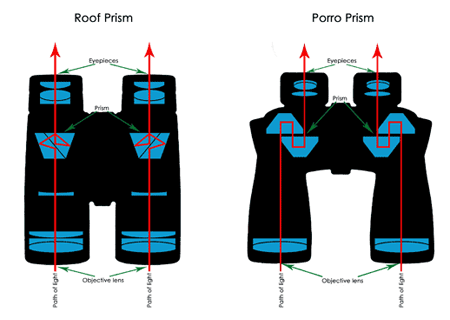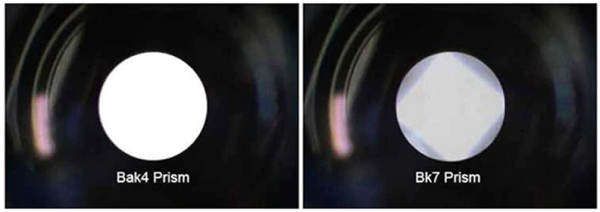Magnification and objective lens diameter are the two numbers that are usually written on the binoculars, such as 8×42, 10×50, or 12×25 are the numbers on binocular. Magnification is the number that indicates how much the binoculars enlarge the object that you are viewing, and objective lens diameter is the number that indicates the size of the lenses that face the object that you are viewing.
Magnification and objective lens diameter are important for the image quality and brightness of the binoculars, as they affect how much detail and light you can see through the binoculars. However, they also have some trade-offs, such as:
- Higher magnification means more detail, but also narrower field of view, lower brightness, and less stability.
- Lower magnification means less detail, but also wider field of view, higher brightness, and more stability.
- Larger objective lens diameter means more light, but also heavier and bulkier binoculars.
- Smaller objective lens diameter means less light, but also lighter and more compact binoculars.
The optimal magnification and objective lens diameter for binoculars depend on your intended use and personal preference. However, a general rule of thumb is to choose a magnification that is between 7x and 10x, and an objective lens diameter that is between 30mm and 50mm, as this range offers a good balance between image quality, brightness, and portability.
Field of View
Field of view is the area that you can see through the binoculars, usually measured in degrees or feet at 1000 yards. Field of view is important for the ease of use and enjoyment of the binoculars, as it affects how much of the scene you can capture and follow through the binoculars.
Field of view is inversely proportional to magnification, which means that the higher the magnification, the narrower the field of view, and vice versa. A narrow field of view makes it harder to locate and track the object, especially if it is moving or far away, while a wide field of view makes it easier to find and follow the object, especially if it is close or large.
The optimal field of view for binoculars depends on your intended use and personal preference. However, a general rule of thumb is to choose a field of view that is between 5 and 8 degrees, or between 250 and 400 feet at 1000 yards, as this range offers a good balance between detail and coverage.
Eye Relief

Eye relief is the distance between the eyepiece and your eye, where you can see the full image without any dark edges or vignetting. Eye relief is important for the comfort and image quality of the binoculars, as it affects how close or far you have to hold the binoculars to your eyes, and how much of the image you can see through the binoculars.
Eye relief is especially important for glasses wearers, as they need more eye relief than non-glasses wearers, to accommodate the space between their eyes and the lenses of their glasses. If the eye relief is too short for glasses wearers, they may not be able to see the full image, or they may have to remove their glasses, which may affect their vision and focus.
The optimal eye relief for binoculars depends on your eyesight and preference. However, a general rule of thumb is to choose an eye relief that is at least 15mm, or more if you wear glasses, as this range offers a good balance between comfort and image quality.
Exit Pupil
Exit pupil is the diameter of the light beam that enters your eye through the binoculars, usually measured in millimeters. Exit pupil is important for the brightness and ease of use of the binoculars, as it affects how much light reaches your eye, and how well you can align your eye with the binoculars.
Exit pupil is calculated by dividing the objective lens diameter by the magnification, which means that the higher the magnification or the smaller the objective lens diameter, the smaller the exit pupil, and vice versa. A small exit pupil makes the image appear dim and dull, especially in low-light conditions, while a large exit pupil makes the image appear bright and vivid, especially in bright conditions.
The optimal exit pupil for binoculars depends on your viewing conditions and preference. However, a general rule of thumb is to choose an exit pupil that is between 2 and 5mm, as this range offers a good balance between brightness and portability.
Close Focus Distance
Close focus distance is the minimum distance that the binoculars can focus on an object, usually measured in feet or meters. Close focus distance is important for the versatility and enjoyment of the binoculars, as it affects how close you can get to the object that you are viewing.
Close focus distance is especially important for viewing small or nearby objects, such as birds, insects, flowers, or art. If the close focus distance is too long for these objects, you may not be able to see them clearly or at all, or you may have to move away from them, which may disturb them or reduce your viewing angle.
The optimal close focus distance for binoculars depends on your intended use and preference. However, a general rule of thumb is to choose a close focus distance that is less than 10 feet, or less if you want to view very small or very close objects.
Eye Strain
Eye strain is the discomfort or fatigue that you may feel in your eyes after using the binoculars for a long time, usually caused by excessive or improper use of the binoculars. Eye strain is important for the health and enjoyment of the binoculars, as it affects how long and how well you can use the binoculars.
Eye strain can be caused by several factors, such as:
- Poor image quality: If the image quality of the binoculars is poor, you may have to strain your eyes to see the details or colors of the object, or to adjust the focus or alignment of the binoculars. Poor image quality can be caused by low-quality optics, improper settings, or external factors, such as dust, fog, or glare.
- High magnification: If the magnification of the binoculars is too high, you may have to strain your eyes to keep the image steady and clear, or to follow the movement of the object. High magnification can also reduce the brightness and the field of view of the image, which can make it harder to see the object or the surroundings.
- Long viewing time: If you use the binoculars for a long time without taking breaks, you may have to strain your eyes to maintain the focus and clarity of the image, or to cope with the changing light conditions. Long viewing time can also cause your eyes to dry out, itch, or burn, which can affect your vision and comfort.
The best way to prevent or reduce eye strain is to choose binoculars that have good image quality, appropriate magnification, and comfortable eye relief, and to use them properly and moderately. You should also take regular breaks, blink often, and adjust the settings and the position of the binoculars to suit your eyes and the environment.
Ergonomics
Ergonomics is the design and the feel of the binoculars, which affects how easy and comfortable they are to use and hold. Ergonomics is important for the ease of use and enjoyment of the binoculars, as it affects how well you can operate and control the binoculars.
Ergonomics can be influenced by several factors, such as:
- Size and weight: The size and weight of the binoculars affect how easy and comfortable they are to carry and hold. Larger and heavier binoculars may offer better image quality and brightness, but they may also be more cumbersome and tiring to use. Smaller and lighter binoculars may offer more portability and convenience, but they may also be less durable and stable.
- Shape and grip: The shape and grip of the binoculars affect how easy and comfortable they are to handle and adjust. Binoculars that have a curved and smooth shape, and a rubber or textured coating, may offer a better grip and protection for the binoculars. Binoculars that have a straight and angular shape, and a metal or plastic coating, may offer a more sleek and durable look for the binoculars.
- Focus and diopter: The focus and diopter of the binoculars affect how easy and comfortable they are to focus and align. Binoculars that have a large and smooth focus wheel, and a convenient and precise diopter adjustment, may offer a better focus and alignment for the binoculars. Binoculars that have a small and stiff focus wheel, and a hidden or coarse diopter adjustment, may offer a more compact and simple look for the binoculars.










